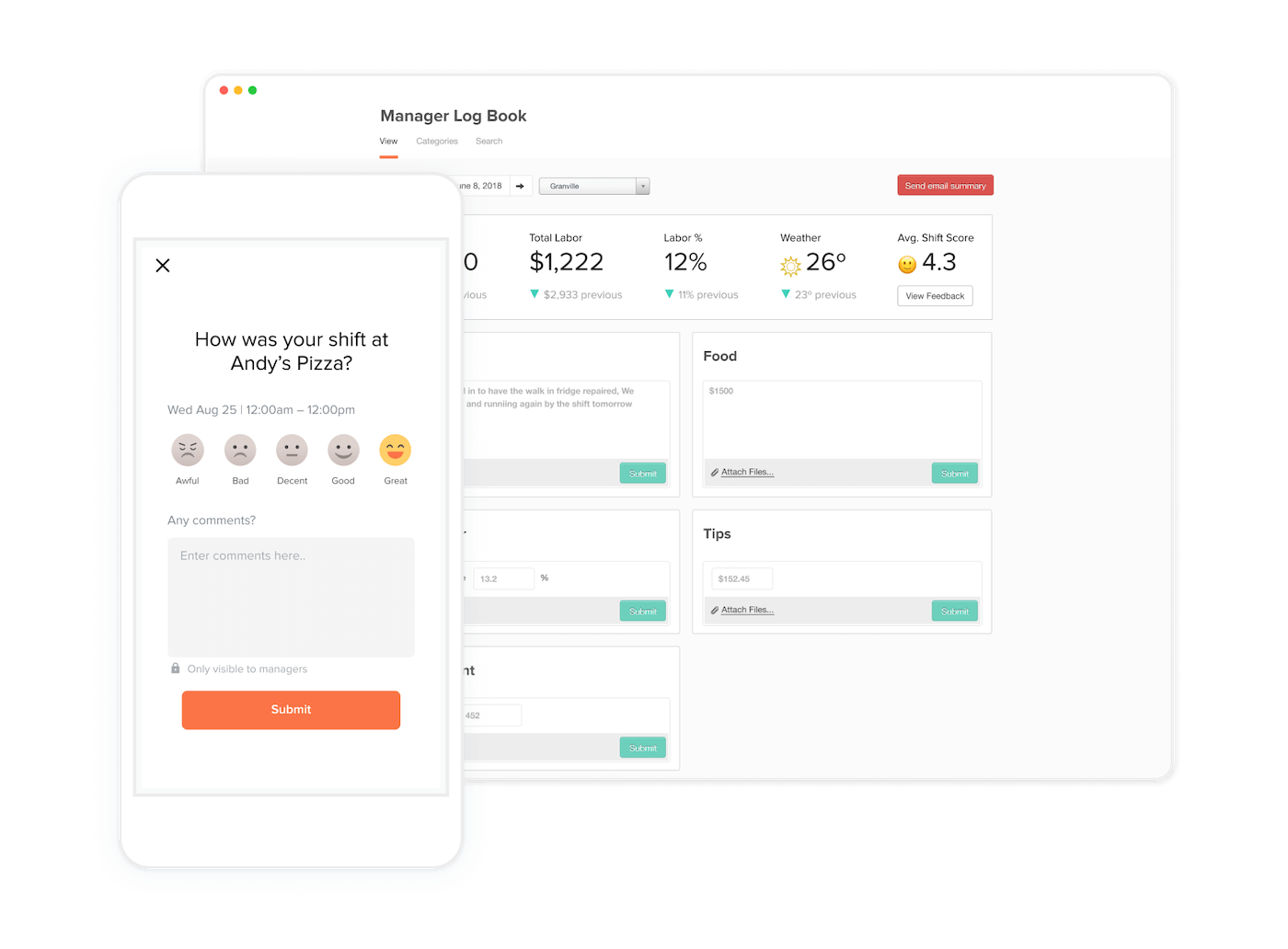When it comes to running a restaurant, every shift counts. A bad shift can lead to unhappy customers and disgruntled staff. But it’s the good shifts, when the front of house and back of house are flowing like a symphony, when customers are delighted, and the restaurant atmosphere feels effortless—that’s the best part about restaurants.
The way to run great shifts is to get out ahead and schedule pre-shift meetings. In the words of the great restaurant consultant Jim Sullivan, “If you don’t run the shift, the shift will run you.” The pre-shift meeting ensures that doesn’t happen. Here’s how to do it right:
What is a pre-shift meeting and its purpose?
A pre-shift meeting is, simply, a meeting that occurs before meal service where the manager gathers the team to go over updates, train them, and get the team excited and motivated for the upcoming shift. They generally occur around the same time as a staff meal, and are anywhere from 5 to 15 minutes long.
Pre-shift meetings cover a variety of topics like menu and pricing changes, sales updates, shift changes, and upcoming events that your team needs to be aligned on. They also serve as a place to offer short training sessions for new practices, taste new dishes and connect with them team.
The pre-shift meeting is also like a pre-game huddle: a time to get your team motivated for the upcoming service. It’s a place for the managers to inspire their teams and amp up the energy for the shift ahead.
How do you run a great pre-shift meeting
Keep it Consistent
Consistency breeds success, so turn pre-shift meetings into a habit. Require everyone on the team to attend, and hold the meeting in a set place and at a set time. This will make it easier for staff to remember. Whether it’s in the kitchen or a private dining room, keep it the same every time.
Have a clear format and structure
Consistency is not just key for time and place, but also for your meeting structure. Because they’re short, pre-shift meetings are at their most effective with a set structure.
Here is an idea for how you may want to structure a 15 minute pre-shift meeting:
- 2 minutes – Gather and Welcome
- 5 minutes – Announcements and business updates
- 5 minutes – Teaching and lessons
- 3 minutes – Praise and motivation
Announcements and business updates
This part of the meeting should cover the basics.
After welcoming the team, dive into the most important things to know for the day ahead. This includes any shift schedule changes, shift roles, side work assignments, events or large parties, and restaurant sales forecasts based on historical data.
Teaching and lessons
This section of the meeting gives managers time to teach and coach their team.
With the essentials covered, use this time to take a deep dive into a topic of relevance for the business. This could be the chef explaining and sharing a taste of a new special, a captain going over service techniques, or a rundown of new policies at the restaurant. You may even invite a distributor in for a wine or spirits lesson. This is valuable time to help your staff professional development and your business grow. Use it wisely!
Praise and motivation
This should be the most fun and exciting part of the meeting.
This section of the meeting is where you dial the energy up to 11 and have fun. Share an inspirational quote with your team and get a bit of a pep rally going. Give praise to individual team members for their accomplishments—in and out of the restaurant. Is it someone’s birthday? Call it out here. Play some upbeat music. Give your team a reason to celebrate and get pumped-up for the shift ahead.
If you’re running any sort of team contest, this part of the meeting is a great place to kick it off or give an update on the progress. Contests are an excellent way to boost sales and team engagement. They may include upselling, a “perfect check,” or overall sales contest—check out this post for some contest ideas to run.
Use and Take Notes
You don’t have to memorize everything you want to say—nor should you try to. Plan everything out ahead of time and put it all down to prepare for the meeting.
This can be on a sheet of paper, on a digital document, or on a whiteboard. Once your notes are ready, share them with other managers to ensure you’re covering everything important. Put a copy of the final notes up in a central location for everyone to see so the team can know what to expect.
Keeping record of the notes is good practice as well, in case you need to reference them back. Copy them into a manager log book like the one built into 7shifts for easy storage and searchable access, or in a shared Google Drive folder with the day and date.
Use the notes process to plan ahead, too. While announcements and praise may be less predictable, you can come up with training and education topics up to a month in advance. Make it a part of weekly or monthly manager meetings to come up with ideas, and include everyone you can. Everyone in the restaurant has something to teach others to help the team grow.

Example of the 7shifts manager log book software
Things to avoid in a pre-shift meeting
A good pre-shift meeting is short, packed with important information, and inspiring. Here’s what to avoid:
- Low energy, monotone speaking. Think of how a boring professor sounds like and avoid it at all costs. Speak proudly and confidently to make sure your meeting is engaging and exciting.
- Singular conversations. If you need to chat to an individual employee about something, the pre-shift is not the place for it. Too much time focused on one person in a team setting can bore others and even breed resentment. If you need to discuss something important, arrange for some 1-on-1 time to handle it.
- Too much time on a topic. A great pre-shift meeting should be short and feel even shorter. How? By not spending too much time on one topic. Areas of discussion that warrant significant time should be allocated for longer, less frequent all-staff meetings. Think of a way to get at the core of an idea and present it quickly. If you can’t, kick it to a different meeting.
Frequently asked questions
How long does the pre-shift meeting need to be?
A pre-shift meeting should be brief and full of helpful information. 15 minutes is about as long as it should be, but if there is less to cover, a pre-shift meeting can be as quick as five minutes.
Who runs a restaurant pre-shift meeting?
A restaurant pre-shift meeting is usually run by the manager on that particular shift. Some restaurant may choose to alternate who runs the pre-shift meeting among leaders in the restaurant.

DJ Costantino, Content Writer
DJ Costantino
Content Writer
Hi! I'm D.J., 7shifts' resident Content Writer. I come from a family of chefs and have a background in food journalism. I'm always looking for ways to help make the restaurant industry better!
